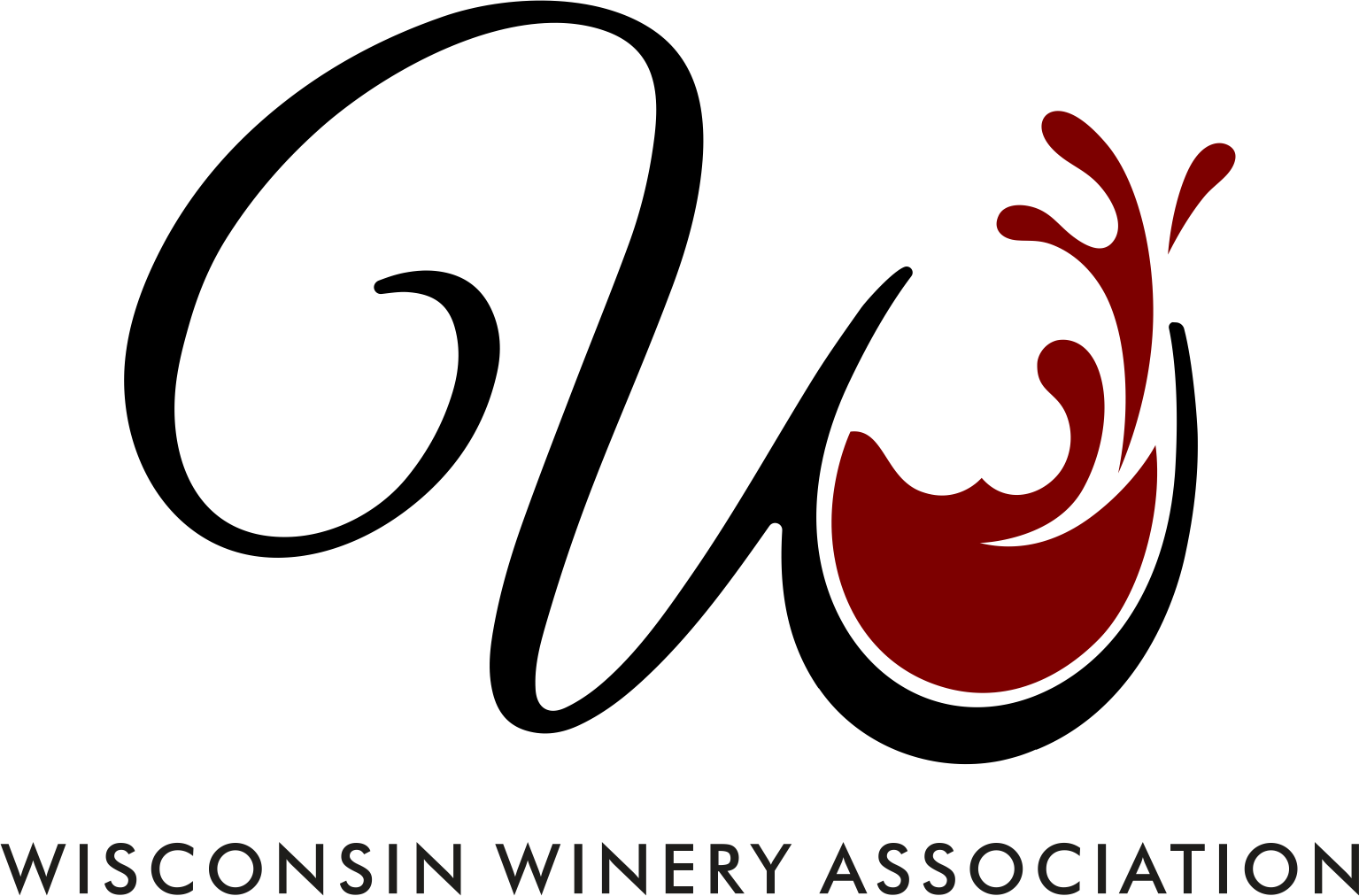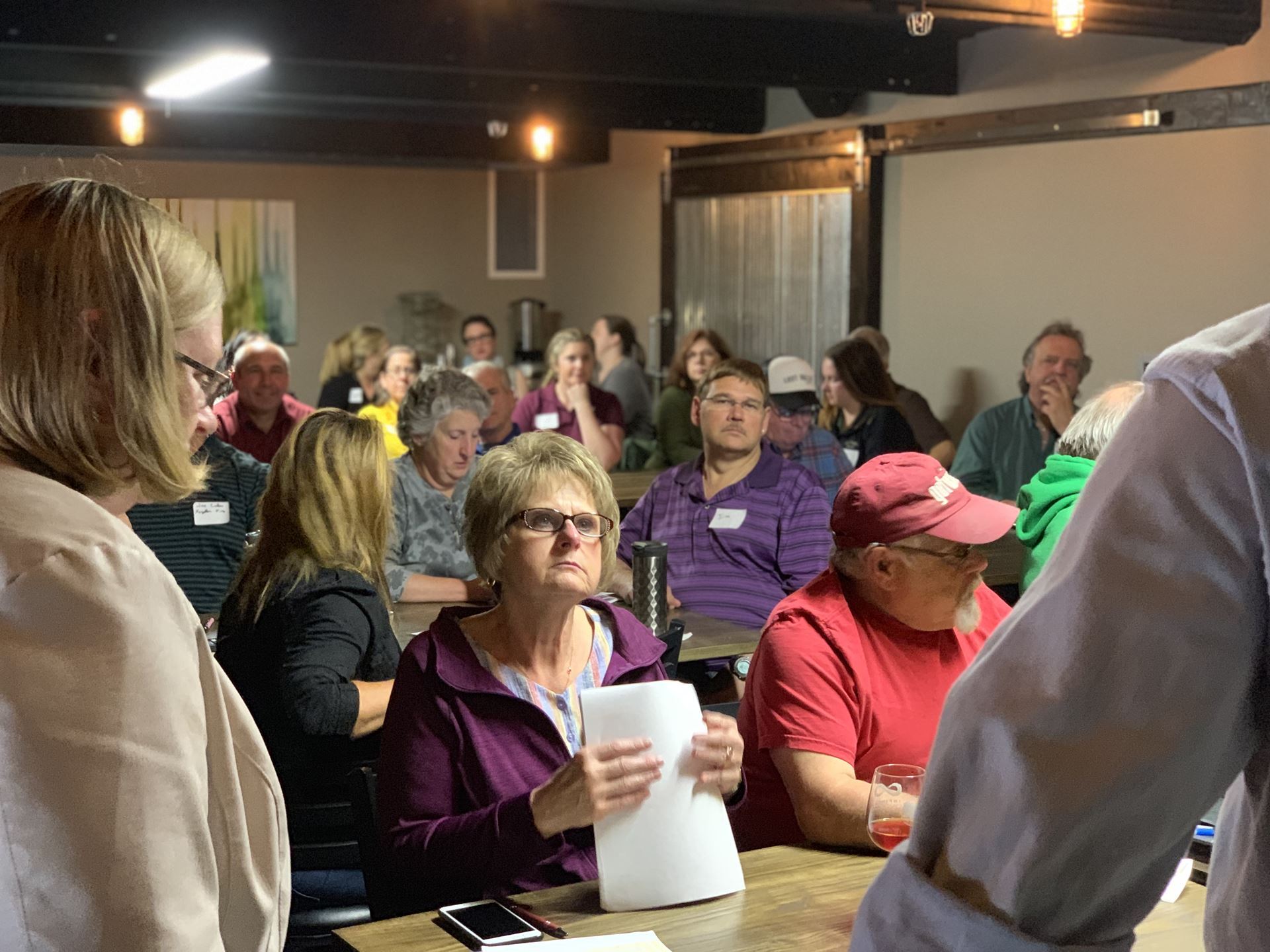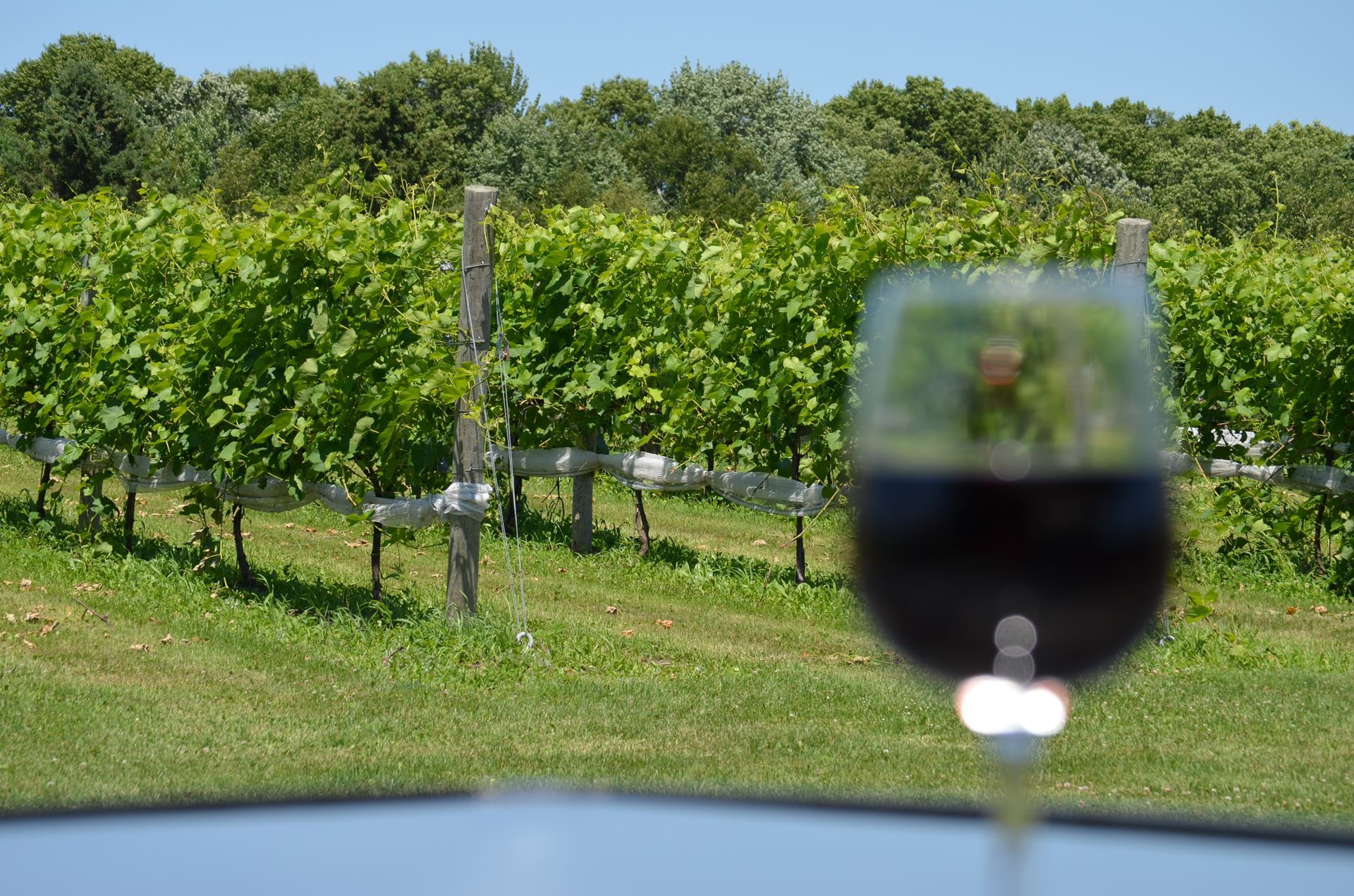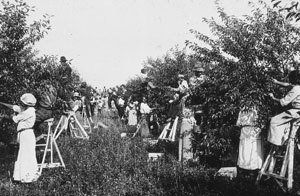| The Wisconsin Winery Association (WWA) is a membership organization of the permitted wineries located in Wisconsin. Together, we support winery owners with information on regulations and legislation; through education, WWA assists winemakers with the production of quality wines and for consumers, WWA promotes the state's beautiful wineries and the wonderful wines produced here. As consumers, we encourage you to use this website to learn about Wisconsin wines, to plan a tour of the state's beautiful wineries and to taste our exquisite wines! Visiting wineries is the perfect way to truly experience Wisconsin’s incredible variety of wines. Meet the winemakers, see the vineyards and orchards, tour the wineries and—best of all—taste the wines! Eclectic, fun, scenic, full of history and personality, you’ll love visiting Wisconsin’s independent wineries. Gaze out over Lake Superior or a lush green valley, take in the exquisite sun-soaked hillside vineyards, breathe the fresh air in the wind-swept orchards - what are you waiting for? Start planning your own tour today! |
The Wisconsin Winery Association (WWA) is run by a Board of Directors that is made up of four officers and five regional directors. The following members make up the WWA Board of Directors:
Board Members
History
The many German settlers who came to Wisconsin in the 1800s also brought with them their winemaking skills, producing versions of traditional German wines as well as new varieties made from North America’s own native grapes. Those early winemakers found that growing traditional European grapes in Wisconsin can be a difficult endeavor. However, using ingenuity, experimentation and perseverance, Wisconsin winemakers learned to cultivate several cold-hardy varieties of grapes that are well-suited to the Wisconsin climate. In addition, winemakers learned to utilize the many fruits that could be grown in the state. In time, a number of Wisconsin grape and fruit wines were born. History of Winemaking in WisconsinIngenuity, experimentation and perseverance
1846 Hungarian immigrant, Agoston Haraszthy, establishes a vineyard, winery and wine cellar overlooking the Wisconsin River at what is today the Wollersheim Winery in Sauk City. 1848 Agoston Haraszthy leaves Wisconsin to head to California. 1850’s German immigrant, Peter Kehl takes over the Haraszthy vineyard and also builds two magnificent stone buildings which today are on the National Register of Historic Buildings. 1890’s Picture of vineyard in Alma taken by Gerhard Gesell. 1899 Peter Kehl’s son, Jacob Kehl, who took over the vineyard and winery dies and so do all of the vines. 1900 to 1971 No wine is made on the Haraszthy vineyard property. 1908 University of Minnesota grape-breeding program begins. Its aim was to produce grapes hardy enough to withstand the Upper Midwest’s continental climate, especially its intensely cold winters. 1913 Elmer Swenson, famous Osceola, Wisconsin grape breeder, born. 1920 - 1933 Prohibition 1944 Bluebell released by University of Minnesota. 1967 First licensed winery in Wisconsin opens—von Stiehl Winery. 1969 Elmer Swenson hired as a gardener at University of Minnesota. 1972 Bob Wollersheim buys Haraszthy vineyard, Wollersheim Winery established. Three Lakes Winery established. Early 1970s Jim Pape opens Stone Mill Winery (now Cedar Creek Winery). 1974 Door Peninsula Winery established. 1977 Swenson Red released from University of Minnesota. 1978 Spurgeon Vineyards established. 1980 Edelweiss is released from University of Minnesota. Elmer Swenson retires from University of Minnesota. He went on to release more hybrids after retiring: Trollhaugen, Petite Jewel, Summersweet, Lorelei, Swenson White, Prairie Star, St. Croix, St. Pepin, LaCrosse, Alpenglow, Shannon, Brianna, Espirit, Sabrevois, Kay Gray and Louise Swenson. 1985 Orchard Country Winery established. 1989 Botham Vineyards established. Woodland Trail Winery established. 1990 Cedar Creek Winery established. New Glarus Primrose Winery established. 1992 Weggy Winery established. 1994 Lake Wisconsin AVA established. This is Wisconsin’s first AVA. It covers 43.75 square miles in Columbia and Dane counties. Distinguishing features include transitional zone from unglaciated to glaciated topography. Bob Wollersheim played a crucial role in establishing this AVA. 1995 Bayfield Winery established. Trout Springs Winery established. 1996 Frontenac released by University of Minnesota. Wisconsin State Fair Wine Garden opens to showcase the state’s wines to fairgoers. White Winter Winery established. 1997 Stone’s Throw Winery established. 1999 LedgeStone Vineyards established. Von Klaus Winery established. 2000 Kerrigan Brothers Winery established. Mason Creek Winery established.
2001 AEppelTreow Winery established. Lil’ Ole Winemaker Shoppe. 2002 La Crescent released by University of Minnesota. Red Oak Vineyard established. Vetro Winery established. 2003 Frontenac Gris released by University of Minnesota. Seven Hawks Vineyards established. Simon Creek Vineyard & Winery established. 2004 Elmer Swenson passes away. Apple Barn Orchard & Winery established. Autumn Harvest Winery established. Brigadoon Winery established. Burr Oak Winery established. Chateau St. Croix Winery & Vineyard established. Tenba Ridge Winery established. 2005 Bob Wollersheim passes away. Hook Stone Winery established. Parallel 44 Vineyard & Winery established. 2006 Marquette released by University of Minnesota. DnA Vintner’s established. Munson Bridge Winery established. Valley Vineyard Winery established. Vernon Vineyards established. 2007 Wisconsin had 41 wineries and about 480 acres of grapes. ( ) http://www.winetrailtraveler.com/wisconsin/wisconsin.php Act 85 makes numerous changes related to wine distribution and production, and the distribution and sale of other alcohol beverages. Captain’s Walk Winery established. Sinnipee Valley Vineyard & Winery established. Staller Estate Vineyard & Winery established. Whispering Winds Winery established. 2008 Wisconsin Winery Co-op & Badger State Winery Cooperative formed in response to the 2007 Act 85. Autumn Winery established. Bauer-Kearns Winery established. Cap-n-Cork’s established. Maiden Rock Winery & Vineyards established. Northleaf Winery established. River Bend Vineyard & Winery established. Vines to Cellar established. 2009 The establishment of the world's largest AVA, the Upper Mississippi River Valley AVA, which includes four states: southwest Wisconsin, southeast Minnesota, northeast Iowa and northwest Illinois. It covers 29,914 square miles and is120 miles east to west and 225 miles north to south. The petition was filed in 2006, and the AVA became effective July 22, 2009. Distinguishing features include the Wisconsin ice age and the effect of glaciations on the region. “Driftless area”, meaning that the massive Wisconsin glacier did not actually cover the AVA, although its lobes extended into Minnesota. Legislation allows wineries to have a distillery. Two Brothers Wines established. 2010 March 2010: Wisconsin Wineries Association (WWA) hires Anna Maenner as the Executive Director. Armstrong Apples established. Clover Meadow Winery established. Danzinger Vineyards established. Elmaro Vineyard established. Grandpa Fro’s Invention Farm & Country Winery established. Harbor Ridge Winery established. Infinity Beverages established. O’Neil Creek Winery established. Quinney Estate Winery established. Shepard’s Hard Cyder Winery The WineSitters established. Wine Tyme Winery established. 2011 The Wisconsin Grape Growers Association (WGGA) and WWA collaborate with the Wisconsin State Fair to hold the first annual Professional Wine Competition. Over 100 Wisconsin wines were submitted. Wollersheim Winery was awarded Best Wisconsin Wine for 2010 Eagle White. Wisconsin Fresh Fruit & Vegetable Conference begins. The winery track began in 2011. The annual meetings are held at this conference each year. Viticulture and Enology Science & Technology Alliance (VESTA) program offered at Northeast Wisconsin Technical College. Driftwatch™ Wisconsin website up and running. Driftwatch™ is a tool to help protect pesticide-sensitive crops and habitats in Wisconsin.
Pending Creation of the Ledge AVA encompassing the Niagara Escarpment. A new bill is proposed in which each winery could be granted up to six retail liquor licenses. Lawmakers behind the legislation said it's an opportunity to help wineries increase their sales and employee more people. Fawn Creek Vineyard & Winery established. Fermenting Cellars established. Fisher King Winery established. Forgotten Fire Winery established. Lewis Station Winery established. Mountain Bay Winery established. Sandstone Ridge Vineyard & Winery established. Studio Winery established. The Chiselled Grape Winery established. Villa Bellezza Winery & Vineyards established. However, using ingenuity, experimentation and perseverance, Wisconsin winemakers learned to cultivate several special varieties of grapes that are well-suited to the Wisconsin climate. In addition, winemakers learned to utilize the many fruits that could be grown in the state. In time, a number of Wisconsin grape and fruit wines were born. |



 Wisconsin has a long history of winemaking. In fact, one could argue that the origins of the American wine industry are firmly rooted in the rich soil of the Badger State. In the early 1840s, a Hungarian immigrant named Agoston Haraszthy established a vineyard, winery and wine cellars overlooking the Wisconsin River at what is today the Wollersheim Winery in Sauk City. Haraszthy went on to establish some of the first successful vineyards in Sonoma, California.
Wisconsin has a long history of winemaking. In fact, one could argue that the origins of the American wine industry are firmly rooted in the rich soil of the Badger State. In the early 1840s, a Hungarian immigrant named Agoston Haraszthy established a vineyard, winery and wine cellars overlooking the Wisconsin River at what is today the Wollersheim Winery in Sauk City. Haraszthy went on to establish some of the first successful vineyards in Sonoma, California.
